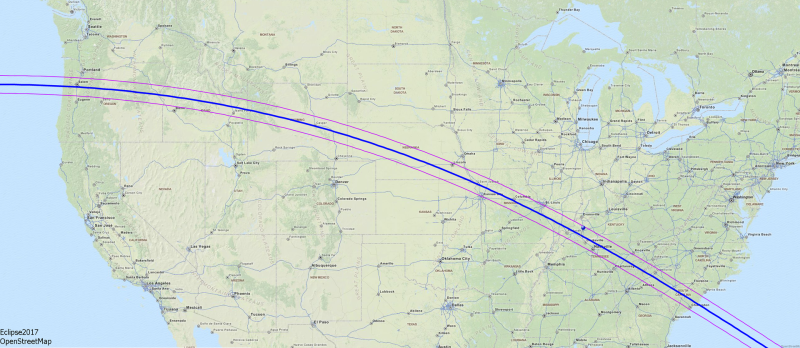
For many cultures a total solar eclipse represents a time when either a demon or animal consumes the Sun. For example, the Vikings saw a pair of sky wolves chasing the Sun, and when one caught it, the wolf would eat it. In Vietnam, either a frog or toad consumed the Sun. For the Kwakiutl tribe on the western coast of Canada, it was the mouth of heaven.
Soon, the United States will have a chance to see an eclipse of our own (and assign cultural value as we please). Mark your calendars: the next total solar eclipse comes to the USA one year from today, on August 21, 2017.
Modern Americans probably don’t know exactly what to make of a total solar eclipse—because most of them have never seen one. The last total solar eclipse in the contiguous United States, 37 years ago, only clipped the northwestern United States, mostly rural areas of Washington, Oregon, Idaho, Montana and North Dakota. According to Eclipse2017.org, the day of Feb. 28, 1979, was cold and dreary in the Northwest, and most people in the path of totality did not see the eclipse due to clouds and rain. The last eclipse to traverse much of the United States came all the way back in 1918, on June 8.
In August 2017, the narrow line of totality will cross the entire country, from Oregon to South Carolina, with all of the contiguous United States seeing at least a partial eclipse. For area of greatest duration (near Carbondale, Ill.), according to NASA and Fred Espenak, a partial eclipse will begin at 16:52 UT (12:52pm ET), with the total eclipse beginning at 18:20 UT and ending at 18:23 UT. The length of the total eclipse will be 160 seconds.
If you miss the eclipse next year—whether due to weather or, you know, a really good TV series marathon—all is not lost. Two more good events will grace skies across the United States in the coming decades, with one event in April, 2024 running from Texas through Maine, and another in August, 2045, from California through Florida.
America hasn’t seen a solar eclipse like this since the end of World War I – Ars Technica

